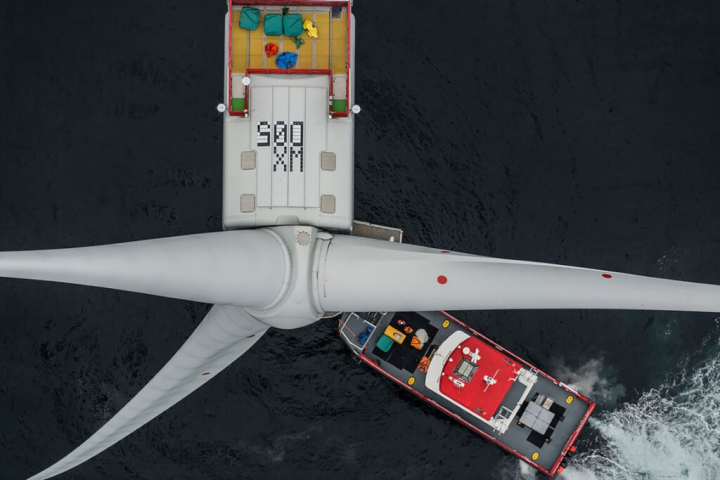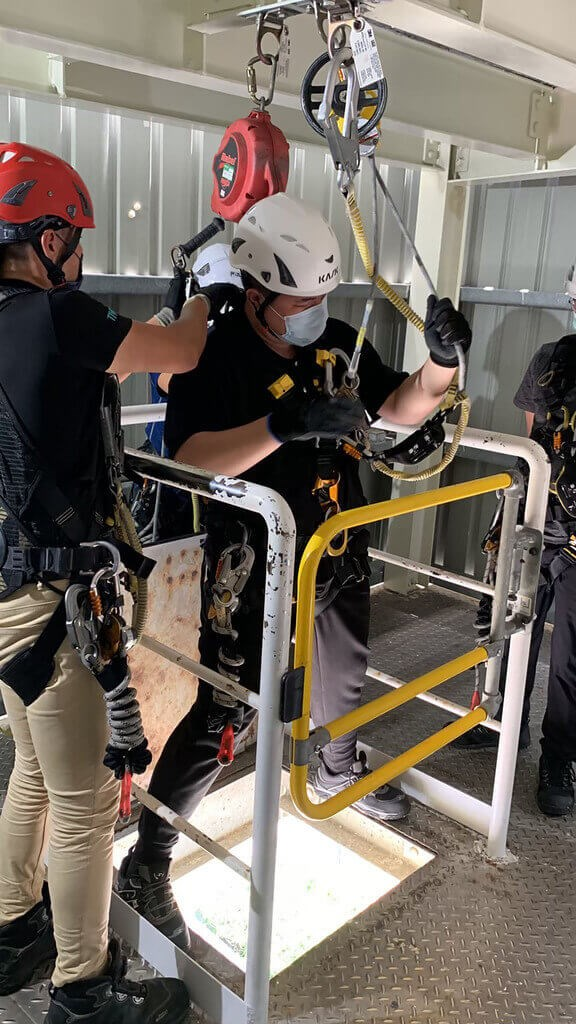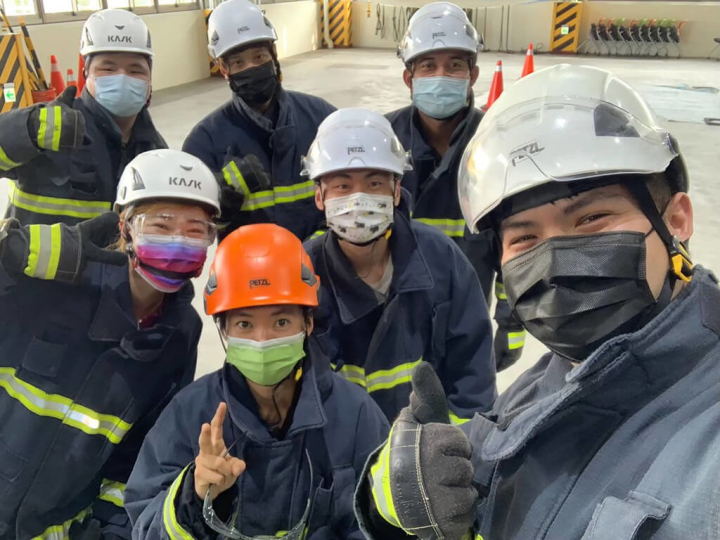


By Joy Tseng and James Lo, CNA staff reporter and writer
"I threw up nonstop on my first day. The day after, I could barely move and my stomach was all cramped up."
"I threw up nonstop on my first day," Chen Yen-wei (陳晏維) said of his experience as an offshore wind turbine technician trainee. "The day after, I could barely move and my stomach was all cramped up."
The 23-year-old is one of two Taiwanese engineers selected to be the first batch of Taiwanese specialists sponsored by Danish energy investment firm Copenhagen Infrastructure Partners (CIP) to pursue an apprenticeship in Europe.
The program is one of several launched by foreign offshore wind turbine farm infrastructure firms such as CIP who have big stakes invested in Taiwan to assist the nation in constructing its renewable energy power grid.
Aside from CIP, foreign green energy conglomerates like Ørsted of Denmark and Canada's Northland Power Inc. have been heavily investing in Taiwan in recent years.
Fully utilizing its geographical advantage, Taiwan plans to raise approximately NT$3.1 trillion (US$99 billion) in investments by 2035. The capacity of wind turbines to be installed by then has been projected at 20.6 gigawatts, which will likely generate 73.3 billion kilowatt-hours every year.
Additionally, while the initial setting up of Taiwan's offshore wind farms required the skillsets of experienced foreign experts, the Global Wind Organization (GWO) has estimated that the future need for manpower to operate Taiwan's wind farms will create 24,528 opportunities to local job seekers.
Arduous apprenticeship
"Have you ever heard of seamen being seasick?"
As Taiwan's Changfang & Xidao Offshore Wind Farms, which is still being completed, will adopt wind turbines engineered by Danish wind turbine conglomerate Vestas, Chen was deployed to Denmark alongside fellow countryman Huang En-tse (黃恩澤) to become specialist technicians as CIP's sponsored recruits.
The duo's apprenticeships were designed to help them become specialist technicians who could then service Taiwan's growing number of turbines, experiences which featured elevated risks in foreign nations.
The duo spent 45 days in June last year at Vestas' Horns Rev 3 offshore wind farm in the North Sea for their first trainee contract and faced harsh conditions which the Taiwanese men had rarely experienced, much less worked in, before.
"Have you ever heard of seamen being seasick?" the 31-year-old Huang said of his experience.
"You haven't, but they must have been in their youth. Such things, like physical fitness, can be built up."
With the encouragement and support of colleagues and mentors, the duo took some time but eventually found their proverbial footing and began expanding their engineering horizons through wind turbines.
Both men learned the ins and outs of the trade such as the intricacies in maintaining machinery inside a nacelle, as well as workplace safety when examining turbine blades while suspended above ground at heights equivalent to a 30-story skyscraper.
"Safety is key in this line of work," Huang said. "Make one mistake on a wind farm and one might die from electrocution."
Regarding safety, both men received extensive training to ensure that the risks to their lives when working at tall heights and with electricity are at a minimum.
Chen and Huang first had to attain a number of GWO-issued certifications such as Advanced Rescue Training (ART), Blade Repair Training (BRT), and classes in Standard Slinger Signaller/Rigger Signal Person.
The duo had to then complete internal training with Vestas before being able to go out to sea and work on offshore wind farms such as the one on the North Sea where their knowledge and endurance were put to the test. "We trained on land without having to consider the problem with waves," Huang reminisced about his training.
The Taiwanese engineer went on to say that after going out to sea, both he and Chen had to improvise with what they learned to safely maneuver between their transportation vessel and the outside of the tower part of the turbines.
The Taiwanese engineer went on to say that after going out to sea, both he and Chen had to improvise with what they learned to safely maneuver between their transportation vessel and the outside of the tower part of the turbines.
Following their stint in Denmark, the men subsequently trained in the U.K. for a month before departing for another contract in September where they trained in Belgium.
Electrifying Taiwan
Currently, Taiwan faces a shortage of not just specialist recruits in the field, but in all aspects of the industry as a whole.
To meet demands, Taiwan now has four institutions dedicated to training people to fill all positions relating to the trade.
According to Chen Wei-te (陳維德), deputy director of the Ministry of Economic Affairs' Metal Industries Research & Development Center, the English proficiency required to communicate with expat coworkers, such as those from CIP, alone discourages prospective employees, not to mention the thought of having to work in situations where both technicians and risks are elevated.
That being said, Chen remains optimistic about the future prospect of Taiwan's green energy industry and wind farms, stating Taiwan could very well achieve Tier 1-status as wind turbine maintenance contractors.
"Many positions will become available," Huang said of the offshore wind farm industry. "It only depends on who wants to put their foot in the door."